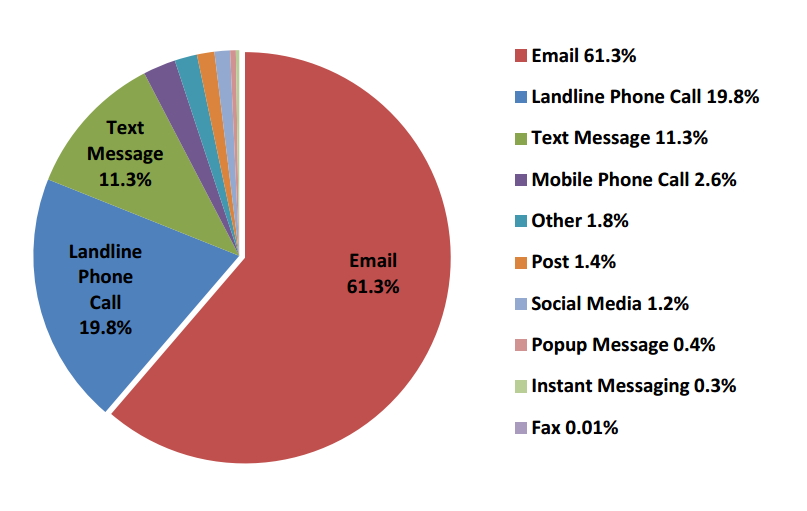The report provides an analysis of the most prevalent trends and characteristics of phishing campaigns in the UK during May 2016. The analysis is based on information reported to Action Fraud via the Attempted Scams or Viruses Reporting Tool and data obtained from National Fraud Intelligence Bureau phishing inbox.
The most commonly reported communication channel is email. The second was by land line phone calls; the third was by text message.

And what do they criminals want you to do? The main request was to click on a potentially malicious hyperlink contained in the message, followed by requests to provide personal information or online banking/bank card details.

The ‘hook’ to get you to take an action is claiming to be a trusted source and using their logos and typical contents or messages. The top 4 sources were government bodies, banks, online payment providers (e.g. Paypal) and IT companies.
Protecting yourself
Be suspicious of unexpected emails, phone calls and texts
Make sure you have applied the latest security updates to your operating system and applications – this includes security updates on phones and the apps you have.
Make sure you have backups, and they have been tested. Hopefully, you will never need to restore any data, but you don’t want to find something is missing, or the backup is corrupt when you need it
